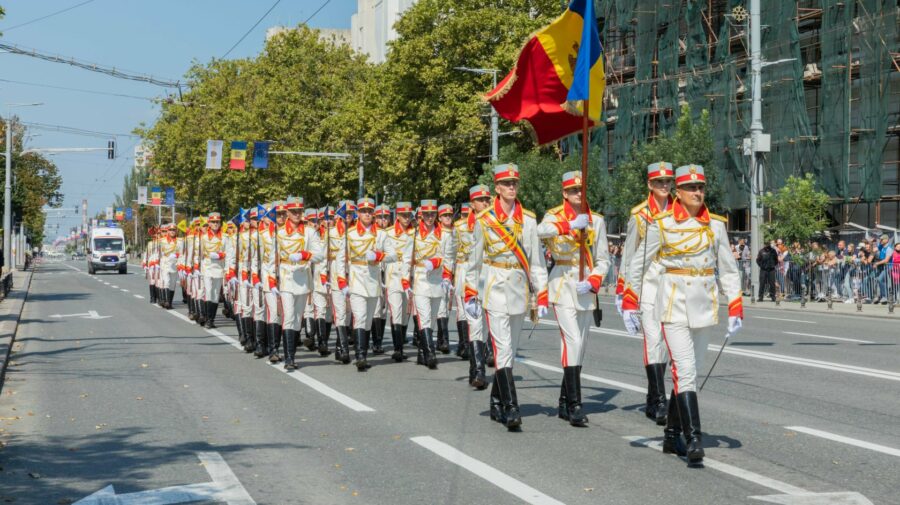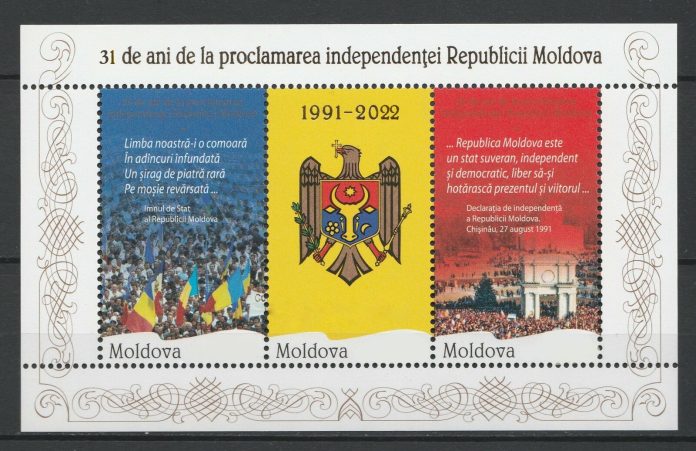For 31 years, the Republic of Moldova has been an independent, sovereign and neutral state. Although there is a frozen armed conflict on the territory of the country and Russian armed forces are stationed. Today, when country’s independence is celebrated, Moldova has firmly chosen the path towards European integration. This meaning it promotes the freedom of speech, democracy, fundamental human rights and security of the republic.

How did everything start so that today we celebrate 30 years of independence?
The proclamation of the independence of the Republic of Moldova in 1991 was the result of a complex process. In June 1988, a group of Moldovan intellectuals gathered in Chişinău and founded an initiative group to support democratization. Thus, on August 27, 1991, following the coup in Moscow, the Republic of Moldova declared its independence, “taking into account the millenary past of our people and its uninterrupted statehood in the historical and ethnic space of its national development”, as mentioned in the Declaration of Independence.
This event was preceded by the adoption of the Declaration of Sovereignty, on June 23, 1990. Also, by boycotting the referendum on maintaining the USSR, on March 17, 1991.
The road to independence from the USSR was a complex one. It was marked by civil demonstrations, the final result being delayed due to pro-Russian activists in Transnistria and the communists. There was an enormous desire to maintain the Moldavian Soviet Socialist Republic within the USSR. The success of the national movements of the late 1980s, however, was undeniable.
There followed the armed war between the right bank of the Dniester River and the guards on the left side. Those from the left, opposed the independence of our country. They were guided by Russia which tried to maintain its geo-political power in the Transnistrian region.
Thus, following this war, the “Dniester Moldavian Republic” or Transnistria as it is known, appeared. It was howevere not recognized by any state. The exception is Russia and other separatist regions, which were created in the same way.
When was the Declaration of Independence signed?
The Republic of Moldova obtained official recognition of statehood on March 2, 1992. Then it obtained the status of a member of the UN. The Declaration of Independence of the Republic of Moldova was a document adopted by the Parliament of RM.
The document refers to the “thousand years of history” and “uninterrupted statehood” of the Romanians east of the Prut in the historical and ethnic space of their ethnogenesis, consecrating, for the space east of the Prut, the official name: the Romanian language. This founding act of the Republic of Moldova from August 27, 1991 is marked every year as the Independence Day.
The declaration was adopted and signed by 278 deputies in the Parliament on 27 August 1991. The original act burned during the 2009 protests in Chisinau. An identical document however, was restored in 2010 with the signatures of the same deputies of the first Parliament.
The declaration of independence of the RM clearly and directly supports the sovereignty of Moldova on the territory of Transnistria. Because it is “a component part of the historical and ethnic territory of our people”.
What happened after the Declaration of Independence?
After the acquired independence, Moldova hardly managed to maintain the position of a unitary state. There were difficult years, with Governments and Parliaments that perished, and the citizens felt poverty, miserable wages, delays in their payment, minimum living conditions, factories and factories closed, then privatized, etc.
A turning point followed in 2001, when the communists returned to the leadership of the country. They tried to restore order in the country through constraints, oppression and limitations of the rights and freedoms of citizens. These lasted until 2009, when the “Twitter revolution” took place.
On April 7, 2009, tens of thousands of young people protested in Chisinau, accusing the communist government of electoral fraud. Peaceful protests degenerated into violence thanks to provocateurs, infiltrated into the crowd. They attacked, occupied and later set the the buildings of the Parliament and the Presidency on fire. The police intervened in force and tried to stop the atrocities. The police however mistreated some of the protesters either on the streets or in the police stations. This major protest still hides many mysteries, many of the culprits being at large.
However, the “Twitter Revolution” has brought about a radical change in the political regime in the country. Thus, in the anticipated elections on July 29, 2009, in which the Communists again placed first with 44.69% (48 mandates). The opposition parties (PL, PLDM, AMN and PDM) formed a coalition called the Alliance for European Integration, having a fragile majority with 53 of the 101 seats in the Parliament forms a government.
The Republic of Moldova thus moved to a new stage, and the new parliamentary coalition received the support of the Western partners, who wanted to make the small country a success story of the EU’s Eastern Partnership. The first support funds began to arrive, the country registered successes on the external plane. It really seemed that Moldova would soon become a new member of the EU. Sadly it was not the case…
FOR THE MOST IMPORTANT NEWS, FOLLOW OUR FACEBOOK PAGE!
This year, on June 23, in the history of the independent Republic of Moldova a “new chapter” appeared. Our country received the status of a candidate for joining the European Union. The leaders of 27 member states of the community voted unanimously to grant it and supported our European course.
After the invasion of Russian troops in the neighboring country, Ukraine, Georgia and the Republic of Moldova submitted applications for EU membership. Afterwards, the questionnaires submitted by the Union were completed and sent to the officials in Brussels for examination. On June 17, the European Commission gave the green light to the examination of the candidacies of Moldova and Ukraine.


